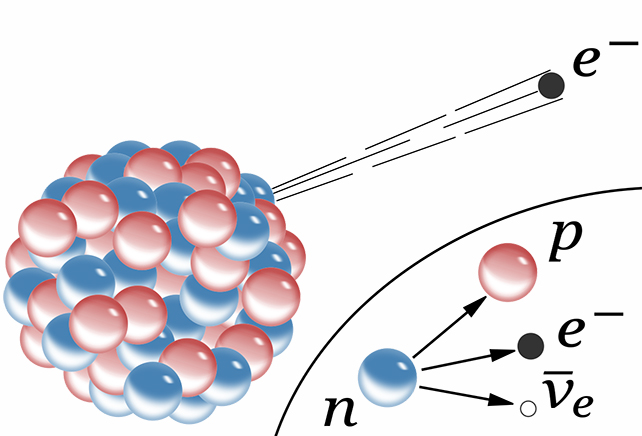Big atoms demand big energy to construct. A new model of quantum interactions now suggests some of the lightest particles in the Universe might play a critical role in how at least some heavy elements form.
Physicists in the US have shown how subatomic 'ghost' particles known as neutrinos could force atomic nuclei into becoming new elements.
Not only would this be an entirely different method for building elements heavier than iron, it could also describe a long-hypothesized 'in-between' path that sits on the border between two known processes, nuclear fusion and nucleosynthesis.
For most elements larger than hydrogen, the warm hug of a big, bright star is enough for protons and neutrons to overcome their strong need to push apart long enough for other short-range interactions to take over. This fusion embrace frees additional energy, helping the cores of stars remain toasty warm.
Once atoms grow to around 55 nucleons in size – the mass of an iron nucleus – the addition of extra protons requires more energy than the process of fusion can possibly repay.
This shift in thermonuclear economics means the periodic table's heavyweights can only form when additional neutrons stick to the congealing mass of nuclear particles long enough for one to decay and vomit out an electron and a neutrino, transforming it into the extra proton required to qualify as a new element.

Ordinarily, this process is painfully slow, trickling away over the scale of decades or even centuries as nuclei within large stars jostle, gaining and losing neutrons frequently with few ever making the switch into proton-hood at the critical moment.
Given enough of a punch, this growth can also be surprisingly quick – in a matter of minutes in the hot mess of collapsing and colliding stars.
But some theoretical physicists have wondered if there are other pathways, intermediate ones between the slow or 's' process and rapid or 'r' process.
"Where the chemical elements are made is not clear, and we do not know all the possible ways they can be made," says the study's lead author, University of Wisconsin, Madison physicist Baha Balantekin.
"We believe that some are made in supernovae explosions or neutron star mergers, and many of these objects are governed by the laws of quantum mechanics, so then you can use the stars to explore aspects of quantum mechanics."
A solution just might be found in the quantum nature of the floods of neutrinos – the most abundant particles with mass in the Universe – that spill out into cosmic environments.
Though virtually massless, with barely any means of making their presence known, their sheer numbers mean the emission and occasional absorption of these ephemeral 'ghost particles' still exert an influence over the budgets of protons and neutrons buzzing about deep inside massive stars and cataclysmic cosmic events.
One bizarre quirk of the neutrino is its habit of oscillating within a quantum fuzziness, switching through several flavors of identity as it flies through empty space.
Modeling vast numbers of neutrinos flipping and flopping flavors within a chaotic nucleon soup is easier said than done, so physicists will often treat them as a single system, where the properties of individual particles are considered as one, big, entangled superparticle.
Balantekin and his colleagues from George Washington University and the University of California, Berkeley, used this same approach to better understand how winds of neutrinos emitted by a newborn neutron star slamming into the surrounding environment could serve as an intermediate process of nucleosynthesis.
By determining the extent to which the quantum identity of individual neutrinos depends on the extent of this entangled state, the team found a significant quantity of new elements could be generated by this ghostly storm.
"This paper shows that if the neutrinos are entangled, then there is an enhanced new process of element production, the i-process," says Balantekin.
While the numbers add up in theory, testing the idea is a whole other matter.
Studying the interactions of 'ghostly' neutrinos on Earth is still in its infancy, leaving researchers to stare into the distance of space in search of evidence of new ways the biggest elements come together.
This research was published in The Astrophysical Journal.
